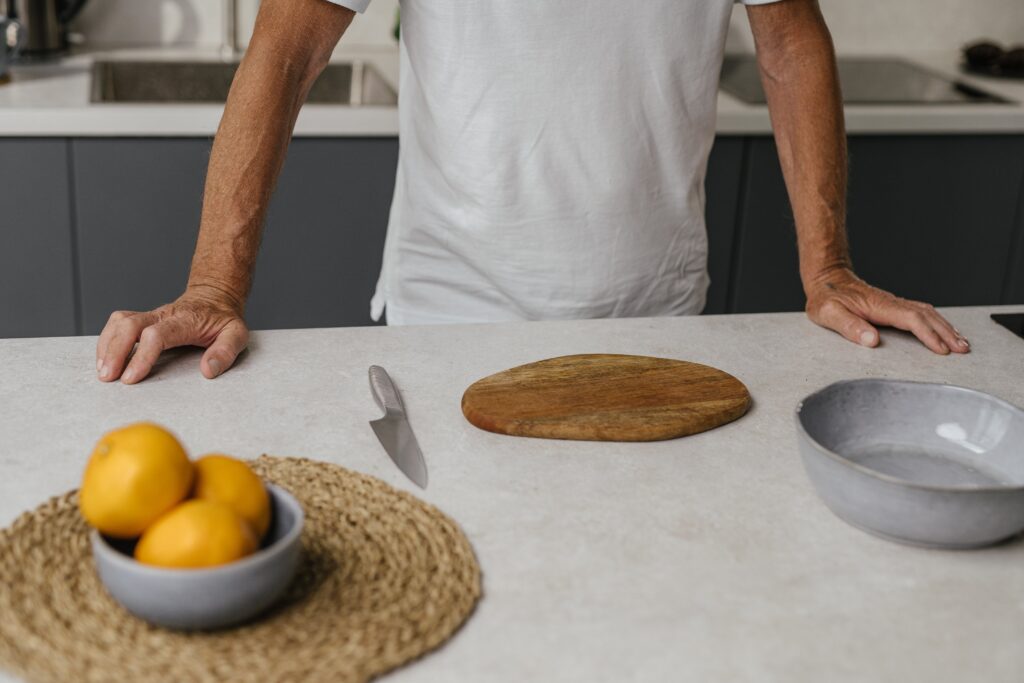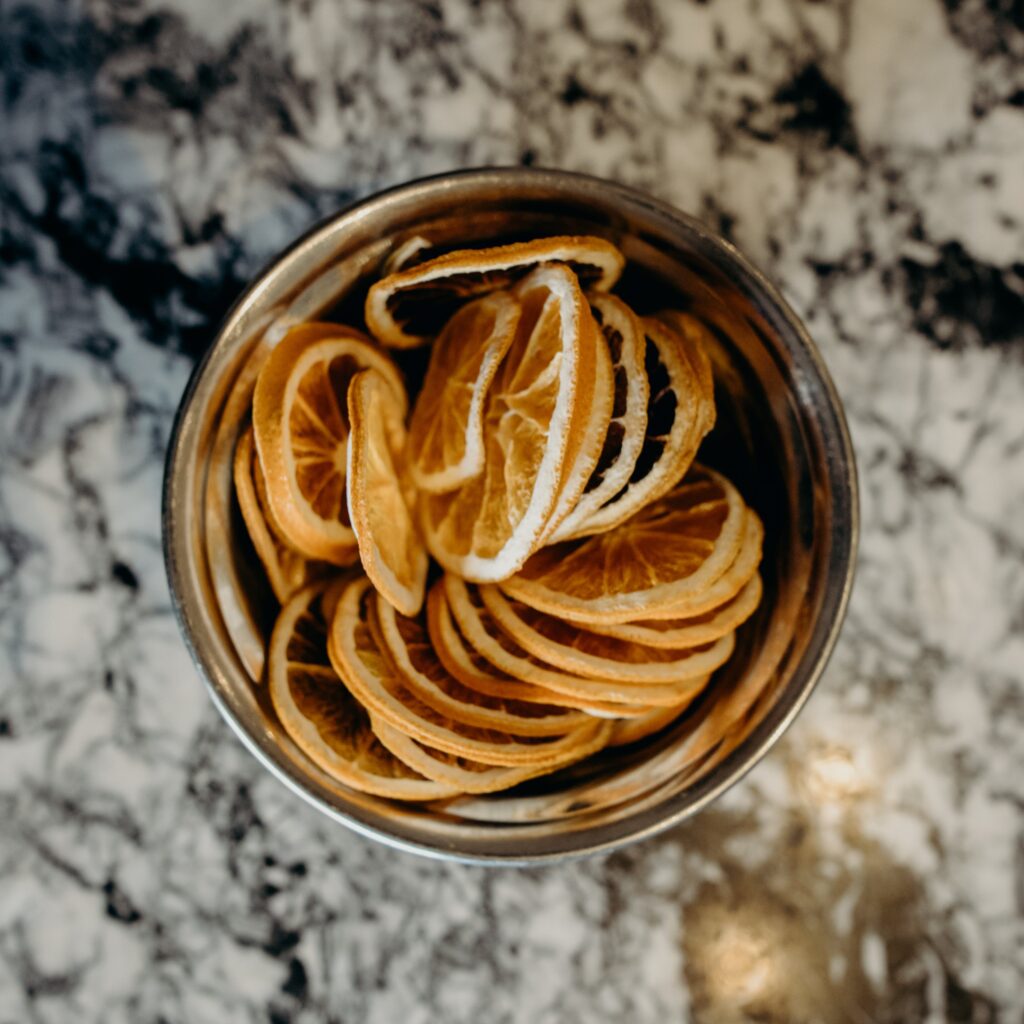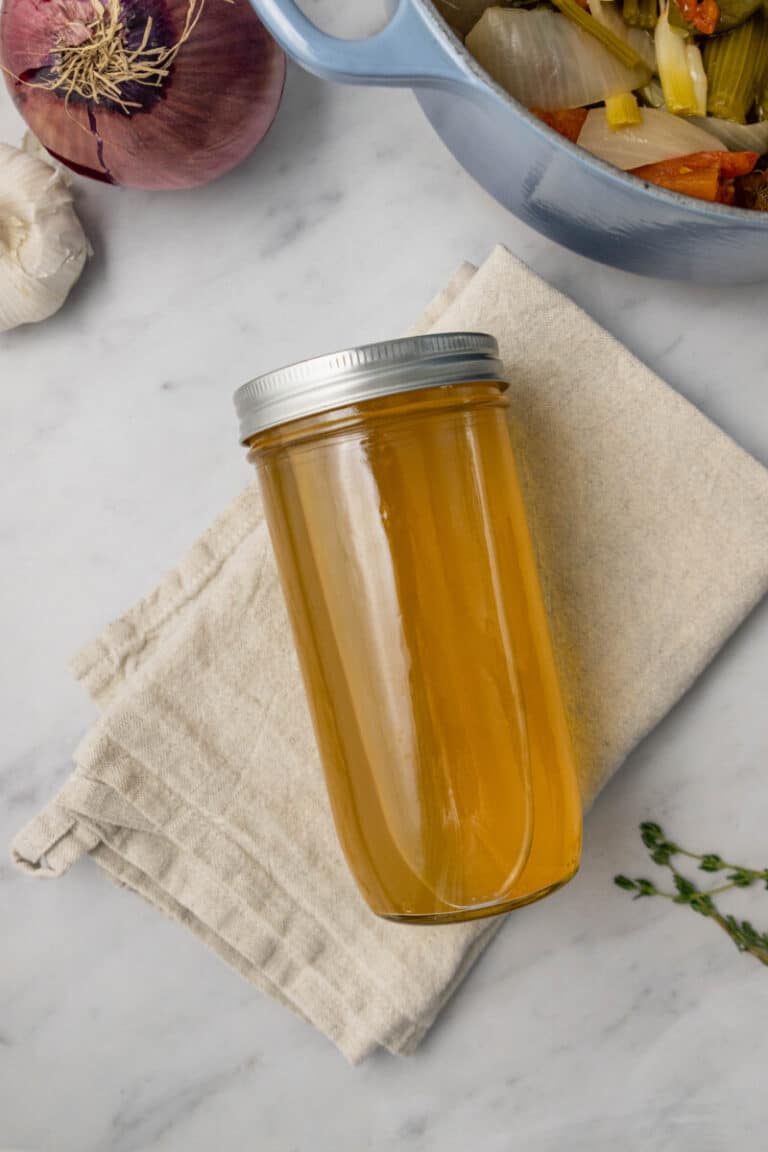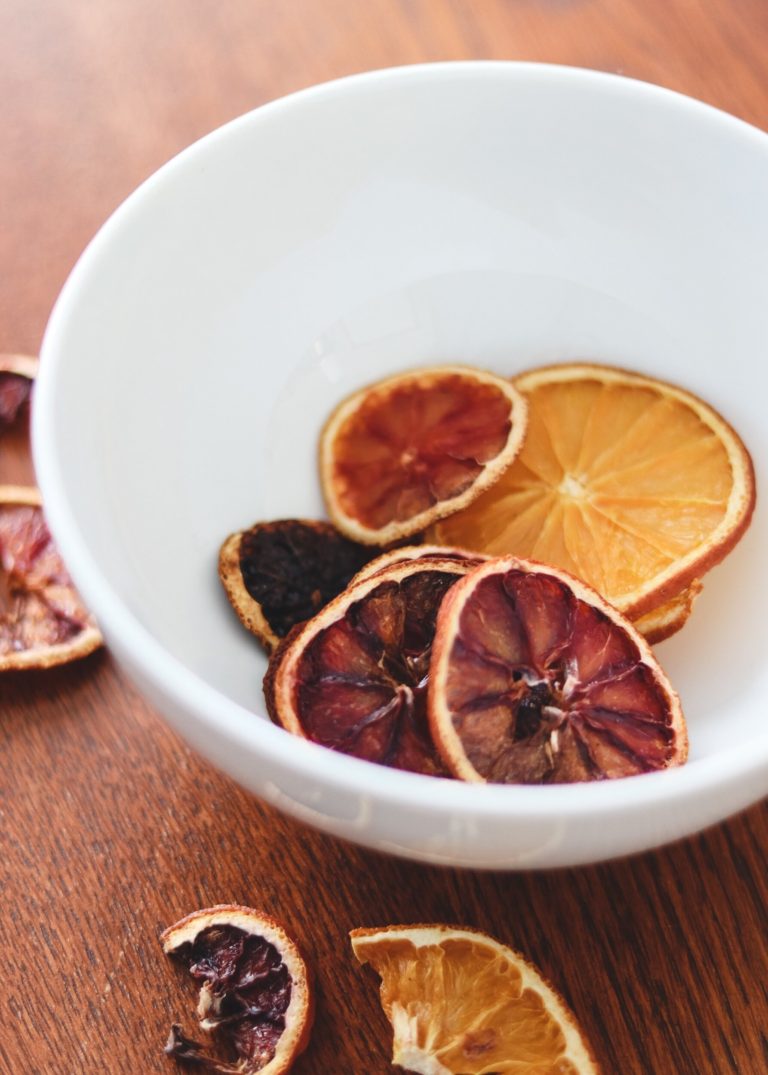
Dried lemons, also known as dehydrated lemons, are a versatile and delightful addition to the culinary world. These citrus jewels can enhance the flavor of food and drinks, bringing a concentrated lemon essence that is both tart and aromatic. Whether you are an avid cook, a tea lover, or someone who enjoys crafting, learning how to make dried lemon slices and use them can add a bright note to your creations. Let’s embark on a journey to explore the different ways to dehydrate lemons and how to utilize them once dried.
How Are Dried Lemons Prepared
Dried lemons are prepared by thinly slicing fresh lemons and then dehydrating them to remove all moisture. This can be done using an oven, or a food dehydrator. Once dried, store the lemon slices in an airtight container in a cool, dry place.
Tips for Perfect Dried Lemons
- Slice Evenly: Uniform slices dry at the same rate, ensuring that all your lemon slices are perfectly dehydrated at the same time.
- Monitor Closely: Whether using an oven or a dehydrator, it’s crucial to check on your lemons periodically to prevent over-drying or burning.
- Experiment: Don’t hesitate to experiment with other citrus fruits. Dehydrate citrus slices from lemons, limes, oranges, and blood oranges for a variety of flavors and uses.
- Add Sugar (Optional): For a sweeter take, lightly coat your lemon slices with sugar before drying. This can add a delightful candied effect, perfect for garnishing desserts or adding to sweet beverages.

How to Dehydrate Lemons
Here are the easiest ways to make dried lemon slices:
How to Make Dried Lemons in An Oven
- Prep Time: Begin by preheating your oven to its lowest setting, usually around 170°F (75°C) or less, to ensure that you dehydrate rather than cook the lemon slices. The prep time includes slicing the lemons thinly, ideally with a sharp knife to get even citrus slices, which promotes uniform drying.
- Using Parchment Paper: Line a baking sheet with parchment paper. This prevents the lemon slices from sticking and ensures easy cleanup. Arrange the lemon slices in a single layer, ensuring they do not overlap.
- Drying Time: Place the prepared baking sheet in the oven. The drying process can take anywhere from 4 to 6 hours, depending on the thickness of the slices and the oven’s temperature. The goal is to achieve fully dry lemon slices that have retained their color without burning.
Using a Dehydrator for Dried Lemon Slices
If you have a food dehydrator, you can achieve more consistent results when making dried lemons. Set the dehydrator to 135°F (57°C) and arrange the lemon slices on the trays without overlapping. The dehydrator method also takes about 4 to 6 hours but can vary based on the dehydrator’s efficiency and the slice thickness.
Suggested: 7 Best Food Dehydrators
How To Dehydrate Lemons in the Air Fryer
Dehydrating lemons in an air fryer is a quick and efficient method, given that air fryers circulate hot air to remove moisture. Here’s a simple guide on how to do it:
- Preparation:
- Wash the lemons thoroughly.
- Slice the lemons thinly, about 1/4 inch thick, for even drying. Ensure the slices are uniform in thickness.
- Preheat the Air Fryer:
- Preheat the air fryer to a low setting, ideally around 135°F to 160°F (57°C to 71°C). If your air fryer doesn’t go as low as 135°F, set it to the lowest possible temperature.
- Arrange the Lemon Slices:
- Arrange the lemon slices in a single layer in the air fryer basket. It’s important not to overlap them to ensure even airflow and drying.
- If your air fryer has a mesh basket or rack, use it to maximize airflow around the slices.
- Dehydrating:
- Start dehydrating at the preheated temperature. Since air fryers are more powerful and circulate air more efficiently than conventional dehydrators or ovens, the process will be quicker.
- The total time can vary depending on the air fryer model and the thickness of the slices, but start checking after about 1 hour. It may take up to 2-3 hours for the lemon slices to fully dehydrate.
- Check for Doneness:
- The lemon slices are done when they are completely dry and brittle to the touch.
- If they’re not yet fully dehydrated, continue air frying in 30-minute increments, checking regularly to avoid over-drying.
- Cool and Store:
- Allow the dehydrated lemon slices to cool before storing them in an airtight container. Keep them in a cool, dry place to preserve their flavor and extend their shelf life.
Tips to Keep in Mind When Using the Air Fryer to Dehydrate Lemons
- Monitor closely: Since air fryers can vary greatly in power and temperature accuracy, it’s important to keep a close eye on the drying process, especially the first time you try this method.
- Spacing is key: Ensure good airflow by not overcrowding the basket. You may need to work in batches depending on the size of your air fryer.
- Air Fryer Models: Adjustments in temperature and time may be necessary based on your specific air fryer model and its capabilities.
This method is a great way to quickly dehydrate lemons for use in teas, baked goods, or as a garnish, leveraging the convenience of your air fryer.
Suggested: 9 Best Airfryers

Can I Use a Microwave to Dehydrate Lemons or Fruit
Yes, you can use a microwave to dehydrate lemons and other fruits, although it’s a less conventional method compared to using an oven or a dehydrator. Microwaving can be a quick way to dry small batches of lemon slices or other fruit slices, making it ideal for those who want to experiment with dehydration but don’t have access to a dehydrator or prefer not to use an oven for hours. Here’s how to do it:
How to Dehydrate Lemons or Fruit in a Microwave
Prepare the Lemon Slices
- Thinly slice the lemons or fruit of your choice, aiming for uniform thickness to ensure even drying. A sharp knife is essential for getting consistent, thin slices.
- If you’re using lemons, you can remove the seeds to prevent them from burning or affecting the texture of the dried slices.
Use a Microwave-Safe Plate and Parchment Paper
- Line a microwave-safe plate with parchment paper. This helps in easy cleanup and prevents the slices from sticking to the plate.
- Arrange the fruit slices in a single layer on the parchment paper, ensuring they do not overlap. This allows the microwave to evenly distribute its energy and dry the slices uniformly.
Heat in the Microwave
- Start with a low power setting (around 30% to 50% of your microwave’s full power) to avoid cooking the fruit slices instead of dehydrating them.
- Microwave in short intervals, starting with 30 seconds to 1 minute, then check the progress. Flip the slices or rotate the plate if necessary to ensure even drying.
- Continue the process, microwaving in short bursts and checking frequently. The total time can vary depending on the microwave’s power, the thickness of the slices, and the type of fruit. Lemon slices may take anywhere from 5 to 10 minutes in total, but this can vary.
Checking for Dryness
- Once the slices appear to be nearly dry, let them cool for a few minutes. They will continue to dry out as they cool.
- Check if the slices are fully dry; they should be brittle or very firm to the touch. If not, continue microwaving in short intervals until they reach the desired dryness.
Suggested: Benefits of Drinking Lemon Juice and Olive Oil
Considerations and Tips When Drying Lemons in a Microwave
- Watch Closely: Microwave drying requires close attention to prevent burning or over-drying the slices.
- Ventilation: Some microwaves may trap moisture, so it’s helpful to slightly open the microwave door at intervals to let out steam if you notice excessive moisture buildup.
- Batch Size: Due to space and efficiency, it’s best to dry small batches at a time. This method is more suitable for occasional use or experimental purposes rather than large-scale drying.
My Thoughts on Drying Lemons in the Microwave
Microwave drying is a quick and convenient method for dehydrating lemons and fruits, especially when you need dried citrus quickly or in small amounts. However, it may not produce the same consistent results as an oven or a dehydrator, especially for thicker slices or higher moisture fruits. Experiment with different fruits, slice thicknesses, and microwave settings to find the best method that works for you.

What Can You Do With Dried Lemons
Once you have your dried lemons, the possibilities for use are extensive. Here’s a few different ways I love to use my dried lemon slices:
- Infusions: Dehydrated lemon slices are perfect for infusing water, teas, and cocktails, providing a refreshing citrus flavor without the added moisture of fresh lemons.
- Culinary Creations: Crush the dried lemon slices into lemon powder using a coffee grinder. This lemon powder can be used as a seasoning for baked goods, marinades, or dressings, adding a burst of lemon zest without the acidity.
- Decorative Accents: Create a citrus garland by stringing dried lemon slices together with other dried citrus fruits like orange slices and blood orange slices. This not only adds a pop of color and fragrance to your space but also celebrates the beauty of citrus.
How to Store Dried Lemons
To store dried lemons, place them in an airtight container and keep them in a cool, dry place. This helps maintain their flavor and prevents them from absorbing moisture from the air.

How Long Do Dried Lemons Last
Dried lemons can last for about 6 to 12 months when stored properly. To ensure maximum longevity, keep them in an airtight container in a cool, dry place away from direct sunlight. The quality of dried lemons may begin to diminish over time, so it’s best to use them within a year for optimal flavor and aroma.
Suggested: How to Clean Cutting Boards with Lemons
Frequently Asked Questions
Are Dehydrated Lemons Edible?
Yes, dehydrated lemons are edible. They provide a concentrated lemon flavor and can be used in a variety of culinary applications, including seasoning dishes, infusing drinks, and as a garnish for baked goods. Dehydrated lemons retain the citrus’s tartness and aroma, making them a versatile ingredient in both sweet and savory recipes.
Does Dry Lemon Have Sugar
No, dry lemon itself does not contain added sugar unless it is specifically coated with sugar before the drying process. The natural sugar content in lemons is very low, and drying concentrates the lemon’s natural flavors and acids rather than its sugar content. However, if you purchase commercially prepared dried lemons, it’s important to check the label for added sugars or sweeteners.
Final Thoughts
In conclusion, making dried lemons is a simple yet rewarding process that can enhance your culinary creations, beverages, and even your home décor. Whether you choose to oven dry or use a dehydrator, the key to success lies in patience and attention to detail during the drying process. Once dried, these lemon slices become a versatile ingredient and decoration that captures the essence of citrus in a wonderfully concentrated form. Happy dehydrating!

Christopher is a food and lifestyle expert, recipe developer and the content creator behind May Eighty Five. With years of experience in the kitchen, he also shares tips, tricks and how to’s that he has learnt over the years. Every week, he shares quick, simple and mostly healthy recipes along with some home and entertaining tips. You will find flavorful cocktails, delicious appetizers, tasty mains and some indulgent desserts. As a home decor enthusiast, he also likes to share simple DIY projects and simple tips for a beautiful home.






One Comment